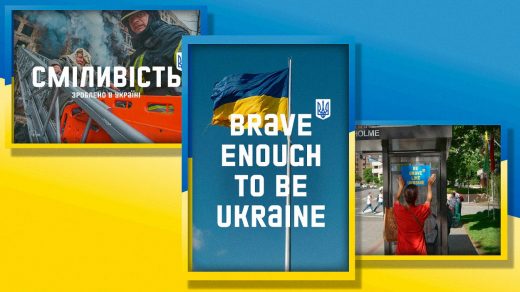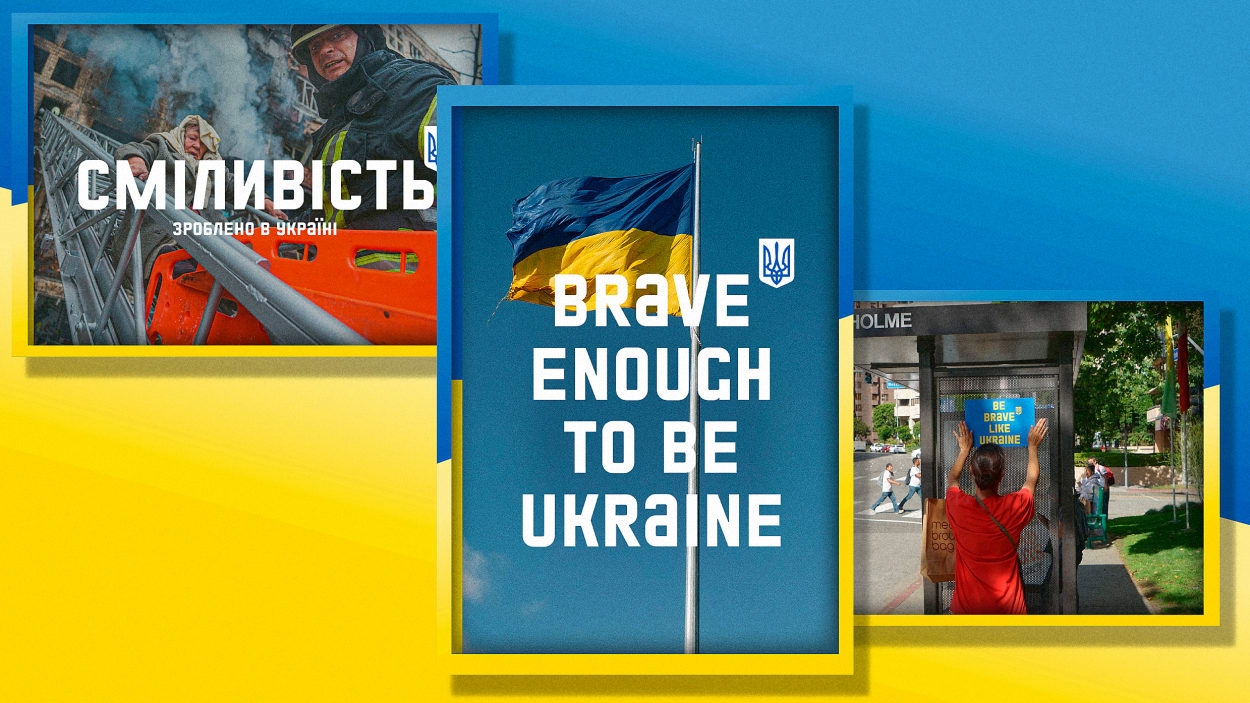Inside Ukraine’s colossal task of ‘rebranding’ itself during a war
Perhaps it started on February 24, 2022, when Russian troops descended on Ukraine. Or maybe it was in 2014, when Russia annexed the Crimean Peninsula from Ukraine. Perhaps it was in 2004, when the Orange Revolution put an end to 14 years of blurred boundaries between the two countries. Or even earlier, when the Soviet Union dissolved and left Ukraine longing for a fresh identity.
What started isn’t a reference to Putin’s hunger to erase Ukraine from the map and swallow it whole. It’s a reference to Ukraine’s quest for a new image—a mirror that the country could hold up to the world to reflect what it is actually like, versus what the rest of the world thinks it is like.
Over the past year, Ukraine has worked hard to crystallize that new image around the concept of bravery. And unlike other countries that have attempted similar rebranding efforts, Ukraine’s Ministry for Digital Transformation (alongside the ad agency Banda) embarked on this official nation branding campaign during a war. The implications of how Ukraine presents itself to the world is nothing short of life or death—and one year into the war, one thing is clear: Ukraine’s resilience to Russia’s attack is likely to change the world’s perception of Ukraine for years to come, while Russia’s global image has completely and utterly collapsed.
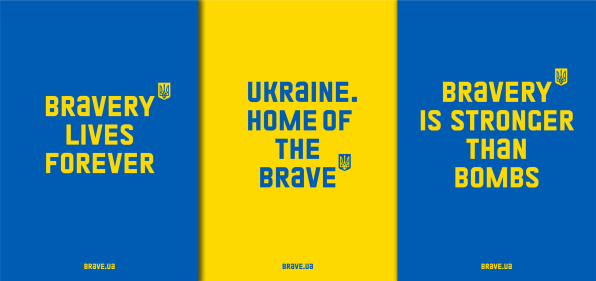
The rise of the nation brand
The idea of a “nation brand” dates back to the 1990s, when former ad executive Simon Anholt coined the term, defining it as the sum of people’s perceptions of a country across industries like tourism, immigration, culture, and people. “I’m accused of being the person who invented it,” Anholt tells me on a phone call, partly in jest. At the time, Anholt meant it as a simple observation, but the concept has since gotten the corporate treatment and has become something agencies can sell as a service to countries looking to change their reputation.
As such, “nation branding” has now become an integral part of various nations’ political, economic and cultural strategies. Countries from Rwanda to Columbia to Bhutan have drawn up logos, coined new slogans, and launched countless branding and rebranding campaigns in an effort to attract investors, tourists, and shift public perception after traumatic events like a war, a genocide, or corruption, tarnished their reputation.
In post-socialist Europe, however, the objective has been a little different. The first post-socialist country to adopt a nation brand was Estonia, ahead of the Eurovision contest it hosted in 2006. Then came Poland, which launched national brand logo designed to help distance itself from its socialist past. According to Nadia Kaneva, an associate professor of media studies at the University of Denver, many of the nation branding programs that followed across Central and Eastern Europe were related to these countries’ efforts to enter the European Union. But not Ukraine.
For much of its 20th-century history, Ukraine was largely unknown to the rest of the world, save for its immediate neighbors. Ahead of hosting the 2012 European Soccer championship, Ukraine came up with a tourism slogan called “Ukraine, it’s all about U!” but it wasn’t until 2017 that the Ukrainian government set out to give itself a full-fledged nation brand.
Right around then, Ukraine hired Ogilvy UK, the advertising agency behind the U.K.’s acclaimed “Great Britain” campaign, which some estimate has brought the country over £4.5 billion of foreign investment since it launched in 2011. To understand how Ukraine was perceived abroad, Ogilvy audited people across various European countries. Three of the words most associated with Ukraine were: “war,” “revolution,” and “corruption.”
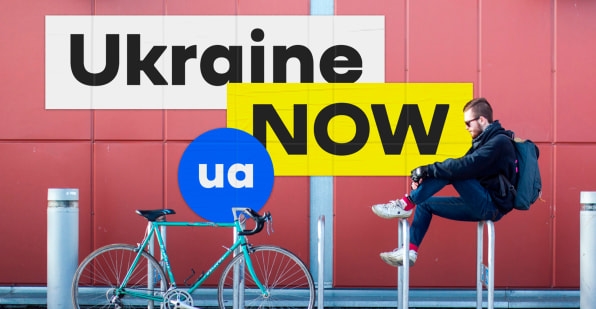
Eventually, the Ukrainian government switched courses and hired Banda, the Ukrainian ad agency, which translated the findings from Ogilvy’s poll into a campaign. “We understood that people knew nothing about Ukraine but these three main words,” says Dmitry Adabir, Banda’s chief business officer. Ukraine’s first real branding effort, titled “Ukraine Now,” launched in 2018, with the goal of refocusing people’s attention on the present. Dressed in the now iconic colors of Ukraine, it was a call to action: “invest in Ukraine now,” or “visit Ukraine now.” Within a year of the launch, Ukraine had moved up 10 positions on the World Economic Forum’s 2019 Travel and Tourism Competitiveness Index; within two years, it had gained 9 places on the World Bank’s 2020 Doing Business ranking (though, of course, it’s impossible to attribute all of this progress to the campaign alone.) The campaign also received the coveted Red Dot Design Award in the Corporate Identity category.
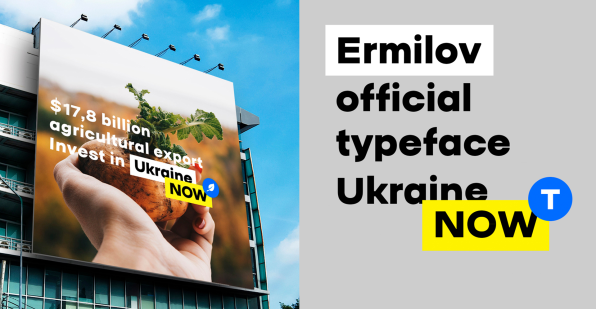
Back then, the objectives behind “Ukraine Now” were threefold: boost tourism, jumpstart investment, and build a more positive image of Ukraine. But in the middle of a war like the one the country found itself in four years later, those objectives changed entirely. “We’re not thinking about tourism or rebuilding,” says Adabir. “We need money, ammunition, things that will help us to fight.”
Ukraine’s ability to fight back against the Russian military hinges on how much foreign aid the country receives, which in turn hinges on how the country is perceived abroad. And so, about a month after Russia invaded the country, Banda launched a new campaign for Ukraine, led Ukraine’s Ministry for Digital Transformation. The new campaign was no longer about the “now;” it was about “bravery.”
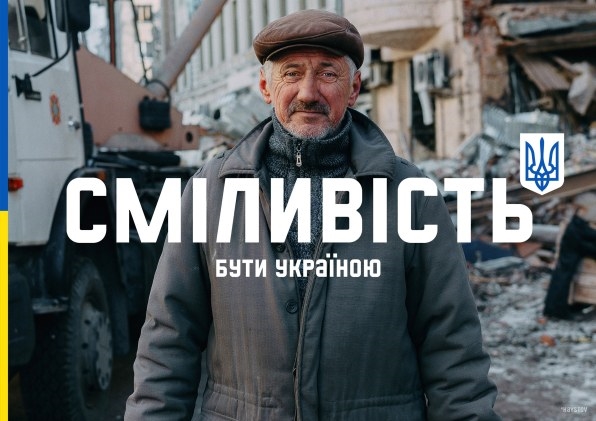
Banda’s creative director, Egor Petrov, recognizes the naiveté of that proposition. To declare a new image while a country is at war is a strange thing to do; disillusioned even. But for him, it was about distilling Ukraine’s situation down to one simple word. Soon enough, the country’s new motto became “Be Brave Like Ukraine.” The messaging was endorsed by Zelensky in a video address. It lit up 10,000 billboard screens in 20 countries and 150 cities, including Times Square in Manhattan. It appeared on posters, T-shirts, hoodies and socks tagged as “Brave Merch.”
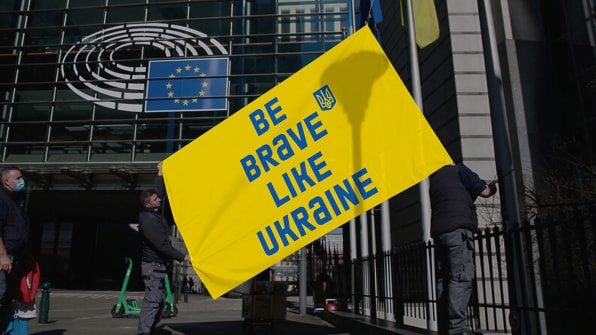
In just a few months, Ukraine became a “global beacon of bravery,” says Kaneva, the associate professor of media studies. By inspiring other countries to “be brave like Ukraine,” it has positioned itself as a guide leading by example. “Ukraine is not asking to be saved, but is taking on a heroic mission to defend Western liberal ideals,” says Kaneva, noting that this strategy may appeal to those who uphold democratic values and alienate those who don’t. “With right-wing politicians gaining ground in many Western countries, it remains to be seen if support for Ukraine will last and if the message of bravery will continue to resonate,” she says. For now, it has allowed Ukraine to parlay its bravery into a defense subsidy. Since last February, Ukraine has received more than $100 billion in aid commitments, with almost $50 billion from the U.S. alone.
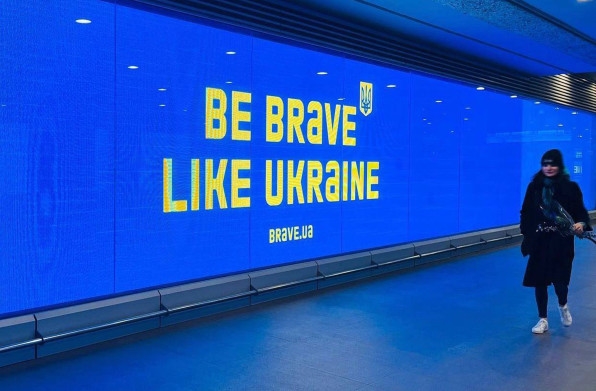
Building a brand
Building a nation brand can’t happen overnight, says Anholt. For nearly 20 years, Anholt has been running an index ranking country reputations; each country is scored across six categories from exports, and the extent to which consumers seek or avoid products from said country, to tourism and the level of interest they have in visiting a country.
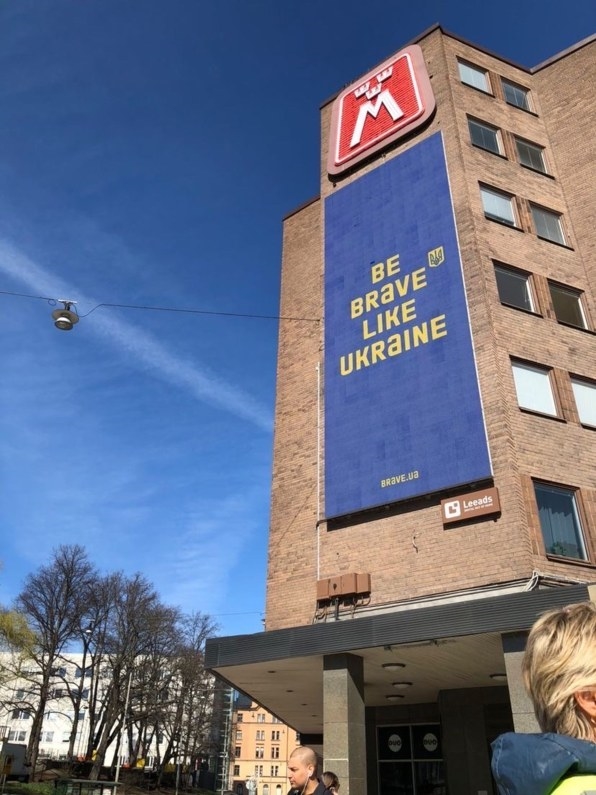
To Anholt, the only infallible way for a country to truly grow its brand is time. Take Germany and Japan, both of which were “pariahs” by the end of the WWII. “If I’d been doing the Index in 1946, they would’ve been at the bottom, where Russia is now,” says Anholt. But in the 70 years since the Nazi Party surrendered and the country was divided in four occupied zones, Germany has climbed all the way to the top of the index, followed by none other than Japan. According to Anholt, the reversal in perception is rooted in decades of actions. Germany and Japan didn’t simply tell other people why they should pay attention. They showed them. “They taught the world through behaviors that they were no longer aggressive, no longer militaristically inclined,” says Anholt.
After decades of German investing in design and production of consumer goods, people started associating German products with quality. Dieter Rams’s elegant designs put Braun on the map in the 1950s. The Volkswagen Beetle became an icon in the 1960s. Then came a focus on culture—“Don’t forget Beethoven and Bach—they weren’t Nazis,” says Anholt. And later a focus on tourism. Japan, meanwhile, grew its car industry (Toyota, Honda, Mazda) and came to be associated with leading musical instrument manufacturers like Yamaha and Kawai.
Eventually, both countries became genuinely admired, yet none of these efforts were rooted in a desire to improve their reputation or change their image. “They were doing it to recover economically,” he says. It just so happens that economic progress goes hand in hand with a good image. In other words, he says, perception is formed less by targeted campaigns and more by economic and cultural contributions.
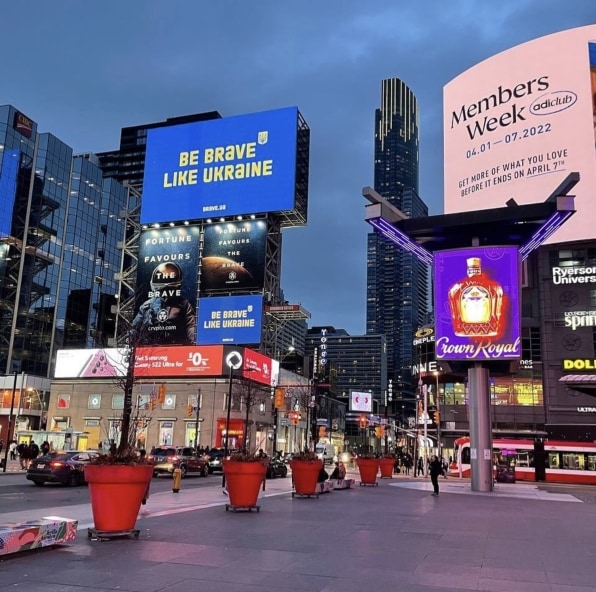
Whether or not the Ukrainian brand will hold sway over the world is yet to be seen. In the 2022 edition of the Nation Brands Index, for which 60,000 people were polled about their perceptions of 60 countries worldwide, Anholt says Ukraine hasn’t moved much from the 47th position. (The online surveys ran in July and August 2022, and Anholt expects the ranking to improve in 2023.) The image of Russia, however, fell by 31 places (to the 58th position,) more than any country has ever fallen since the Index launched in 2005. “Vladimir Putin has destroyed the image of Russia and ordinary Russians for generations to come,” says Anholt. “It’s going to be a bad brand to be Russian for a really long time.”
A “bad’ Russian brand, however, isn’t enough to help build a “good” Ukrainian brand. To win people over, Anholt says Ukraine will need to rebuild itself while doing good, like contributing to the climate crisis, and rebuilding its power grid using green energy instead of fossil fuels. They will likely have to make up for their lack of industry by leaning in on cultural tourism. And they will have to join the EU, which he suggests could do more for their image than “almost any other thing they could possibly do, because the European Union is massively admired worldwide.
The media, and by extension the internet, can play a huge role in shifting the public’s perception of a nation. The way Ukraine portrays itself on its official Instagram account, for example, paints the portrait of a “brave country fighting for freedom in the heart of Europe,” as the bio says. The page strikes a balance between heart-wrenching photography, inspirational posts highlighting snowy Carpathian mountains or borshch recipes, and evocative illustrations by various Ukrainian artists like Anastasia Levytska or Julia Lyshanets.
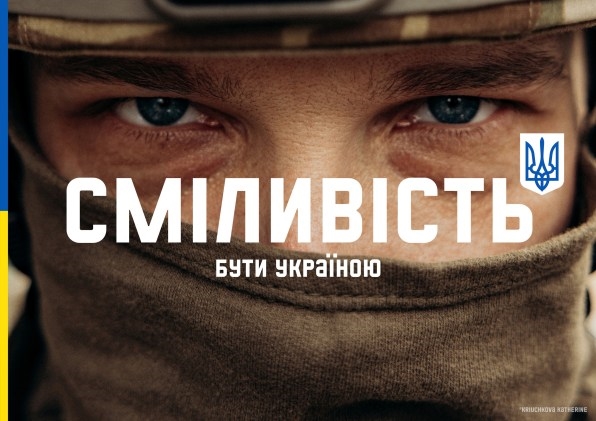
This image is intentionally curated. The account admins didn’t respond to a request for comment, but the social media strategy is clearly meant to elicit feelings and build support by presenting an image of Ukraine that isn’t a victim begging for help, but a warrior fighting for its independence.
Such images have been coming from all fronts, and from unexpected organizations. Over the past year, Ukraine’s National Service has launched 14 custom stamp collections highlighting Ukraine’s resilience, including a stamp by artist Boris Groh, depicting a Ukrainian guard raising a middle finger at the Moskva. Meanwhile, Saint Javelin, an e-commerce website that has raised more than $2 billion for Ukraine, has turned local symbols like Archangel Michael for Kyiv (in collaboration with the local newspaper Kyiv Independent) or the watermelon (which the Kherson region has been growing for centuries) into clever designs for mugs and graphic T-shirts. One of their designs riffs on Nike’s iconic Air Jordan logo, except instead of Michael Jordan holding a basketball, it’s an army man grasping a watermelon—now a symbol of Kherson’s liberation.
Merch can be trivial, but the symbols and graphics that the team behind Saint Javelin has used to portray the country reflect the way people who see and buy their products perceive Ukraine.
“I’m not so narcissistic to think that we’re impacting the brand of Ukraine, but in a way maybe we are,” says Christian Borys, a former journalist who started Saint Javelin in February 2022. “The way people interpret what we do might [influence] the way they see Ukraine and Ukrainians in general.”
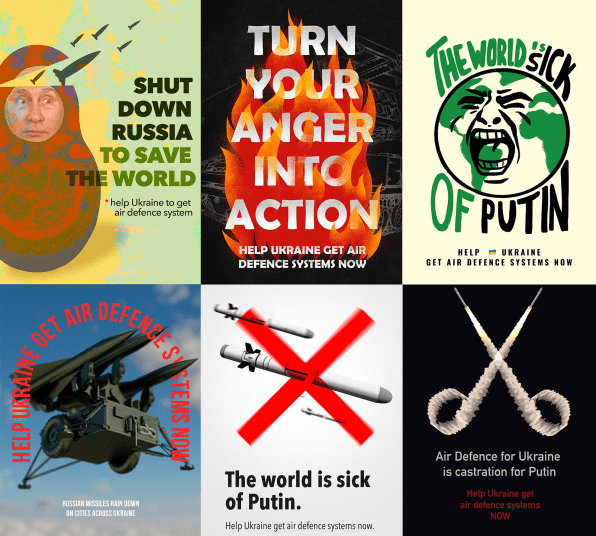
If Anholt is right, we won’t know how any of this will shake out for a long time. But whatever happens, the country’s image will inevitably be shaped by more than one agency or organization. It’s happening already. It is shaped by young Ukrainians who are throwing techno clean-up raves to clear away rubble, and by the countless artists who painted posters demanding for air defense systems. It is shaped by cultural heritage specialists documenting the monuments and relics lost to the Russian invasion. It is shaped by the country’s national rail system and its 230,000 employees, who have been moving people, weapons, and goods for almost a year since the war began. And it is shaped by the stocks of merchandise populating the internet.
By that logic, maybe the country’s “Brave” campaign was redundant. Or maybe it simply amplified and made visible something that outside the realm of war can feel intangible.
(14)

